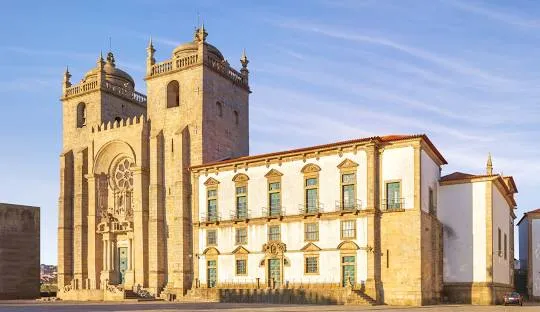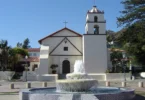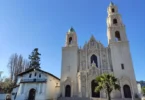Introduction
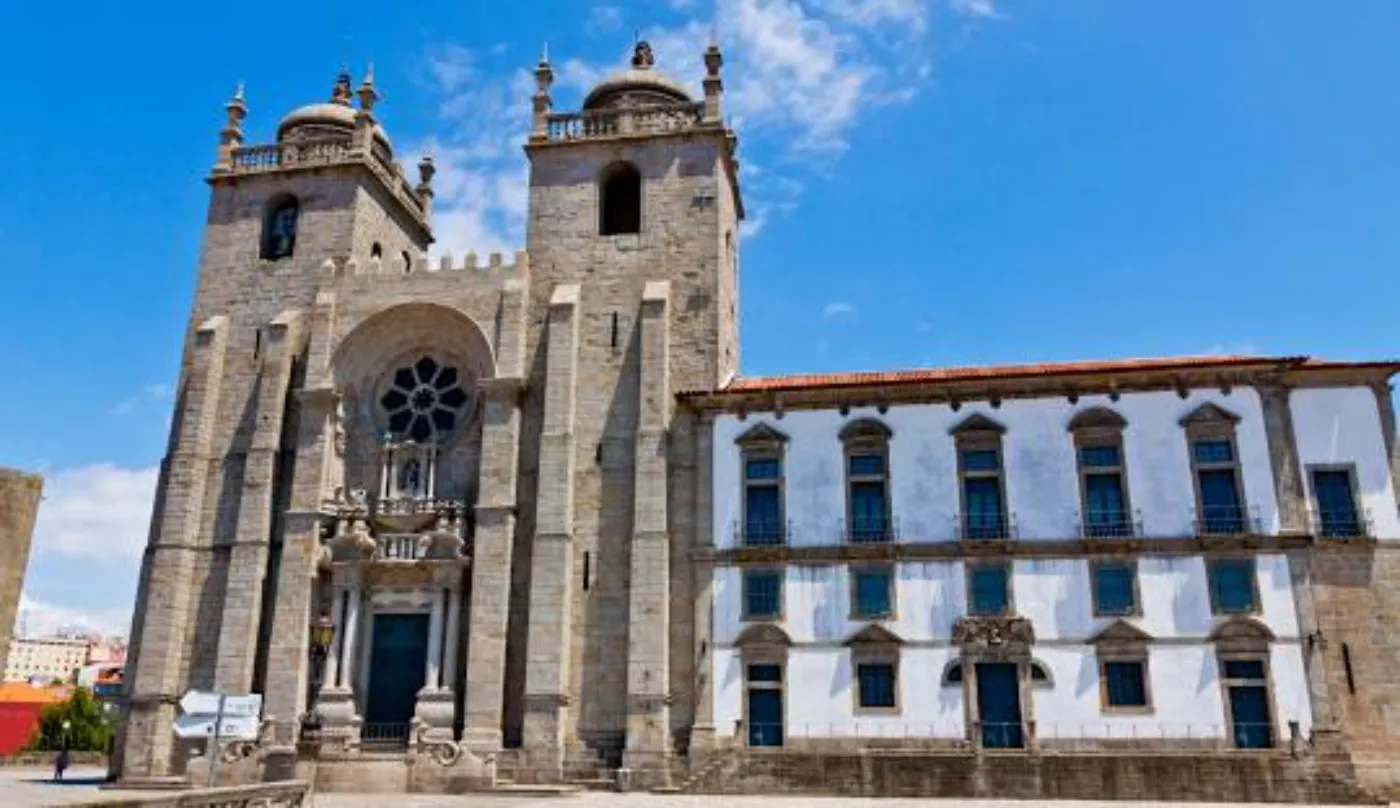
The Porto Cathedral (Portuguese: Sé do Porto) is a Roman Catholic church located in the historical centre of the city of Porto, Portugal. It is one of the city’s oldest monuments and one of the most important local Romanesque monuments.
Built in the highest part of the city, the Sé Cathedral is the most important religious building in Porto. It is located in the Batalha district, next to the walls that once protected the city. The exterior of the building has the appearance of a fortress with battlements.
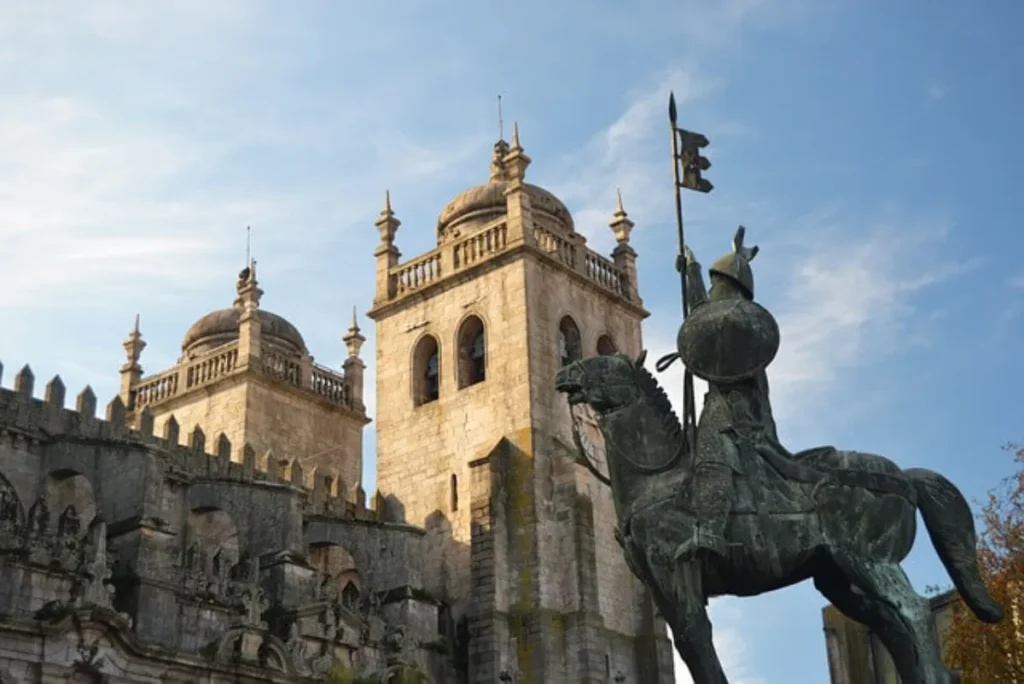
The city has been the seat of a bishopric since the domination of the Suevi in the 5th – 6th centuries. The pre-Romanesque church is mentioned in the De Expugnatione Lyxbonensi as still extant in 1147, so construction of the present building began in the second half of the 12th century and work continued until the 16th century. There were major Baroque additions in the 18th century, and further changes were made in the 20th century.
The cathedral is flanked by two square towers, each supported with two buttresses and crowned with a cupola. The façade lacks decoration and is rather architecturally heterogeneous. It shows a Baroque porch and a beautiful Romanesque rose window under a crenellated arch, giving the impression of a fortified church.
The Romanesque nave is rather narrow and is covered by barrel vaulting. It is flanked by two aisles with a lower vault. The stone roof of the central aisle is supported by flying buttresses, making the building one of the first in Portugal to use this architectonic feature.
This first Romanesque building has suffered many alterations but the general aspect of the façade has remained romanesque. Around 1333 the Gothic funerary chapel of João Gordo was added. João was a Knight Hospitaller who worked for King Dinis I. His tomb is decorated with his recumbent figure and reliefs of the Apostles. Also from the Gothic period is the elegant cloister, built between the 14th and the 15th centuries during the reign of King John I, who married English Princess Philippa of Lancaster in Porto Cathedral in 1387.
The external appearance of the cathedral was greatly altered during Baroque times. In 1772 a new main portal substituted the old Romanesque original and the tower cupolas were altered. In 1736 Italian architect Nicolau Nasoni added an elegant Baroque loggia to the lateral façade of the cathedral. During the War of the Oranges whilst the battle at Amarante was taking place a group of Spanish soldiers briefly took control of the cathedral before being overcome by the locals of the town. A marble plaque with a Magnetite backing now hangs up behind the altar in order to remind everyone of those who died whilst regaining control of the chapel. The magnetite backing was chosen in order to remind those travelling near the cathedral by interfering with the direction in which their compass points,
The interior was also altered during the baroque era. In one of the chapels there is a magnificent silver altarpiece, built in the second half of the 17th century by Portuguese artists. Also in the 17th century the romanesque apse (which had an ambulatory) was torn down and a new one was built in baroque style, later decorated with new wall paintings by Nasoni and choir stalls. The altarpiece of the chapel, designed by Santos Pacheco and executed by Miguel Francisco da Silva between 1727 and 1729, is an important work of Portuguese Baroque.
The three red marble holy-water fonts, supported by a statue, date from the 17th century. The baptistery contains a bronze bas-relief by António Teixeira Lopes, depicting the baptism of Christ by John the Baptist.
The South transept arm gives access to the Gothic cloister, which is decorated with baroque azulejos by Valentim de Almeida (between 1729 and 1731). They depict some scenes from the Song of Songs. The remains of the Early-Romanesque ambulatory contain a few sarcophagi. The terrace is decorated with tile panels by António Vidal. The coffered ceiling of the chapter house was painted with allegories of moral values by Pachini in 1737.
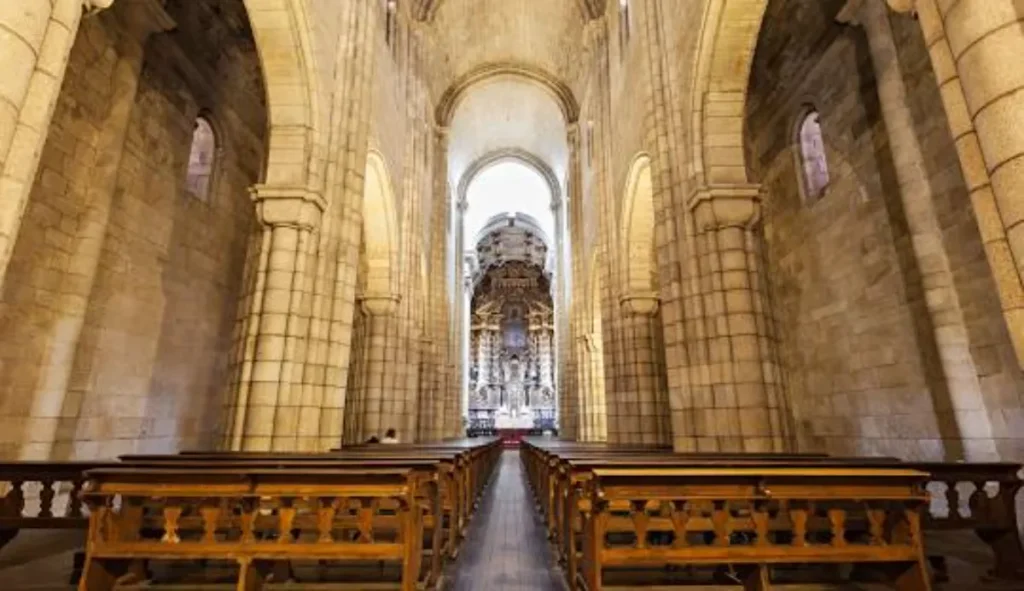
The cathedral’s architecture is a captivating blend of different styles that have developed over many years. This magnificent building combines elements of Romanesque, Gothic, and Baroque architecture, creating a beautiful and harmonious design.
The Romanesque influence is most noticeable in the cathedral’s impressive exterior. The strong granite structure is adorned with detailed carvings and ornate decorations, reflecting the solid and sturdy style of the Romanesque period. The main entrance, highlighted by a stunning rose window, immediately captures attention and sets the tone for the cathedral’s grandeur.
Upon entering the cathedral, one can observe the transition to the Gothic style. Tall and slender columns, soaring arches, and delicate rib vaults create a magical atmosphere reminiscent of the magnificent Gothic architecture found throughout Europe. The interior is further enhanced by exquisite stained glass windows, which fill the space with vibrant colors and a mystical glow, adding to the cathedral’s enchanting appeal.
During the Baroque period, significant changes were made to the Porto Cathedral, enriching its architectural composition even further. Elaborate altarpieces adorned with gold plating, intricate woodwork, and detailed ornamentation transformed the interior, embodying the opulence and grandeur associated with the Baroque style.
Cloister
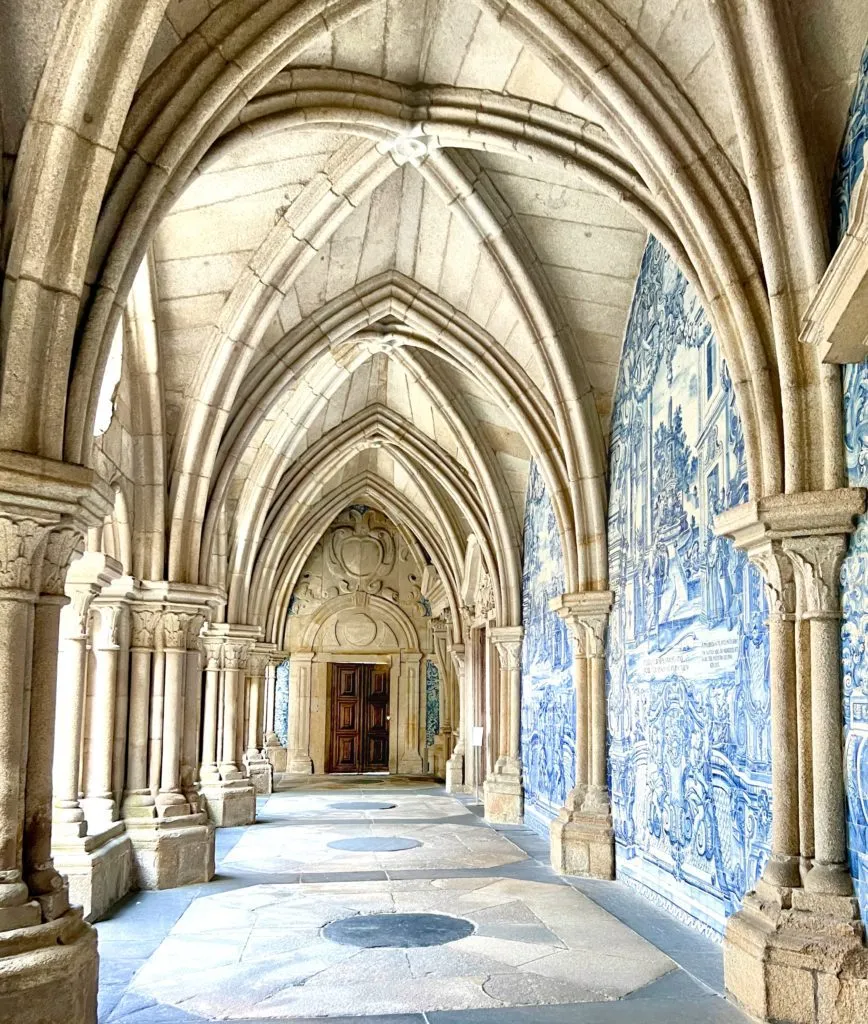
The Entrance to the cloister is located inside the Cathedral, through a door to the right of the temple. The cloister dates back to the fourteenth century and is decorated with tiles painted with some of the scenes from the Bible. From the cloister, you can also visit the Casa do Cabildo, which features the Cathedral Treasure, a collection of its most precious possessions.
Feast Day
Feast Day : 24th June
In the 15th century, specifically in 1492, the relics of São Pantaleão arrived in Porto, making him the city’s first patron saint for the next five centuries. Some may believe that Saint John is the patron saint, as the city hosts a grand event and traditional celebration in his honor on June 24th. However, the true patron saint since 1981 has been Nossa Senhora da Vandoma, with a statue in the Cathedral on the left side, near the silver altar. Every year, on October 11th, the saint is celebrated with liturgical solemnity.
Church Mass Timing
Mass is Celebrated at 11AM Every day.
Church Opening Time:
Monday : 9.00 AM – 5:30 PM
Tuesday : 9.00 AM – 5:30 PM
Wednesday : 9.00 AM – 5:30 PM
Thursday : 9.00 AM – 5:30 PM
Friday : 9.00 AM – 5:30 PM
Saturday : 9.00 AM – 5:30 PM
Sunday : 9.00 AM – 5:30 PM
Contact Info
Address :
Terreiro da Sé, 4050-573 Porto, Portugal
Phone : +351 22 205 9028
Accommodations
Connectivities
Airport
Francisco Sá Carneiro Airport (OPO), to Porto Cathedral Portugal Distance 29 min (17.9 km) via A4.
Railway
São Bento Train Station to Porto Cathedral Portugal Distance 3 min (350.0 m) via Av. Dom Afonso Henriques and R. Tareija Vaz de Altaro.

